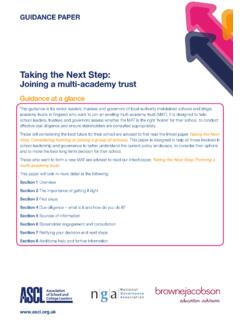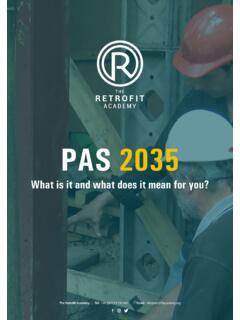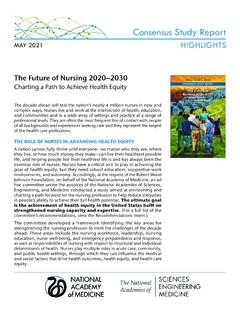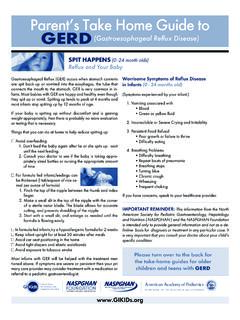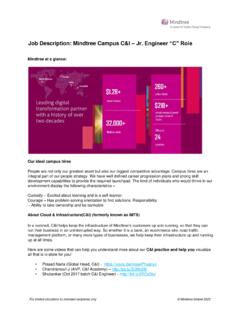Transcription of Academy trust handbook 2021 - GOV.UK
1 Academy trust handbook 2021 also known as the Academies financial handbook For Academy members, trustees, accounting officers, chief financial officers and auditors Effective from 1 September 2021 June 2021 2 Academy trusts must comply with this handbook as a condition of their funding agreement. It provides an overarching framework for implementation of effective financial management and other controls, consistent with your obligations as publicly funded bodies. Other resources are available to help you get the right systems in place. In addition, managing your resources will support best value and promotes public accountability. Feedback To provide feedback about the handbook or to contact ESFA for guidance please complete an enquiry form. 3 Contents Foreword by Baroness Berridge 5 Who should read this handbook 7 What has changed in this edition?
2 9 Part 1: Roles and responsibilities 11 Members 11 Trustees 12 The accounting officer 18 The chief financial officer 20 The governance professional (clerk to the board) 21 Disclosure and Barring Service checks 21 Part 2: Main financial requirements 23 Financial oversight 23 Basic control principles 23 Financial planning 24 Procurement and spending decisions 27 Income generation 29 Risk management 29 Whistleblowing 30 Being transparent about your governance 31 Provision of information 32 Part 3: Internal scrutiny 34 Purpose of internal scrutiny 34 Approach 34 Working with other assurance providers 34 Independence and objectivity 34 Directing internal scrutiny the audit and risk committee 35 Delivering internal scrutiny 36 Part 4: Annual accounts and external audit 39 Preparation and audit of accounts 39 External auditors 39 Review of regularity 40 4 External audit oversight and findings the audit and risk committee 41 Part 5: Delegated authorities 43 Requirement to obtain ESFA approval 43 Novel, contentious and repercussive transactions 44 Special payments 44 Write-offs and entering into liabilities 46 Acquisition and disposal of fixed assets 47 Leasing 48 Managing General Annual Grant (GAG) 48 Gifts 49 Borrowing 49 Related party transactions 49 Applicability of delegations and freedoms 54 Summary of freedoms and delegations 56 Part 6.
3 The regulator and intervention 57 ESFA oversight 57 Access rights 57 Financial management and governance self-assessment 58 School resource management self-assessment tool 58 Funding audit 58 Fraud, theft, irregularity and cybercrime 58 ESFA intervention powers 59 Secretary of State directions 60 ESFA work with the Charity Commission 61 ESFA work with the Insolvency Service 61 ESFA approach to Academy resource management 61 National Audit Office and Public Accounts Committee 61 Part 7: Definitions 63 Part 8: Schedule of requirements (the musts ) 67 Part 9: Further reading 74 Acknowledgements 79 5 Foreword by Baroness Berridge Academy trusts perform an important role in advancing education for the public benefit. As we recover from Covid-19, I have been incredibly impressed by how strong Academy trusts have been able to adapt and continue to advance education even under these most challenging of climates, supporting their schools to deliver the best possible outcomes for our young people.
4 My aspiration is for all schools to have this support and to thrive by being part of a confident and successful multi- Academy trust . For this to happen, it is important that the regulatory framework set by government is intelligent, transparent and efficient, helping trusts to build capacity, to seek ever higher quality and be well run, whilst reflective of their contractual agreement with the Secretary of State. The framework needs to be able to protect children s education and the proper use of public money, enabling rapid and effective action to be taken in the rare instances where concerns arise in trusts. We continue to strengthen and develop the regulatory framework, reflecting the central role trusts now play in the school system. This year, in a significant first step, we are re-branding the Academies Financial handbook to be known as the Academy trust handbook and highlighting within it trusts existing responsibilities in a wider range of areas, acting in the spirit of clarity and providing close to a one stop shop for trustees, local governors and leaders of trusts.
5 In particular, we are pointing you to the key legislation and guidance about safeguarding, health and safety and estates management by which you are already bound. It is essential that trusts comply with these important requirements to ensure the welfare of pupils. Nothing is more important than keeping children and those who work with them safe; this and effective education can only be achieved in a well-maintained, secure, and comfortable environment. The scope of the handbook reflects my vision to provide you with clear and comprehensive guidance to help you deliver excellent oversight of your schools. In parallel, recognising how we continue to intervene on occasion in broader governance issues, not only in response to financial management concerns, we are updating the name of the Financial Notice to Improve.
6 Going forward this will be known as a Notice to Improve. I also want to draw your attention to three further additions to the handbook ; again, these are not new requirements for those governing and leading trusts, but we are taking this opportunity to expressly remind you of your obligations. First, the handbook emphasises that trusts should reserve places in their governance structure for parents, carers or other individuals with parental responsibilities either on the main trust board or in local governing bodies. Involving parents in trust governance 6 helps ensure that boards stay accessible and connected to the community they serve and supports robust decision making. Secondly, the handbook highlights the benefit of commissioning an external review of your governance, as a stronger means of identifying potential improvements, rather than self-assessment alone.
7 I encourage you to consider a review if your trust is undergoing significant change, but also to reflect on how it could support you more routinely. The handbook points you to resources that can help. The final area to emphasise is cyber security. Many of you will be aware of the increasing number of cyber-attacks involving ransomware which are affecting the education sector and others. I know that these events can have devastating effects on organisations and individuals, and the Department continues to work with crime prevention agencies to help trusts protect themselves. The handbook highlights the National Crime Agency s advice not to pay ransoms, and to approach us if your trust finds itself in the very difficult position of contemplating such a payment. I want to end by thanking you for your resilience and commitment to effective governance, leadership and financial management in the most demanding of years.
8 Thank you for all you have provided to your pupils, families and communities over this time. As the regulatory framework continues to develop, please do draw on the handbook as an essential tool to support improvement in these areas. Baroness Berridge Parliamentary Under Secretary of State for the School System 7 Who should read this handbook Find out if this handbook applies to you. Read this handbook if you have responsibility for governing, managing or auditing an Academy trust . This includes: Academy members, chairs of trustees, trustees, local governors and audit and risk committee members Academy accounting officers, chief financial officers and governance professionals (clerks to the board) Academy auditors. The handbook comprises short topics explaining requirements that trusts must follow.
9 Depending on your role, you may need to read other material, which is signposted throughout. What the handbook covers The handbook : describes the governance and financial responsibilities of Academy trusts reflecting their status as charitable companies acting in the public interest refers to trusts statutory responsibilities covering safeguarding and health and safety explains when trusts must obtain ESFA approval in advance for financial transactions. Trusts must ensure they are familiar with these requirements as described in part 5. ESFA may intervene where trusts do not seek ESFA approval in advance balances the need for effective financial governance with the freedoms that trusts need over their day to day business sets out the areas of HM Treasury s Managing Public Money applying to trusts, and reflects The 7 principles of public life (selflessness, integrity, objectivity, accountability, openness, honesty and leadership)
10 To which public office holders must adhere covers all types of Academy including single Academy trusts, trusts with multiple academies, free schools, studio schools, university technical colleges, alternative provision and special academies must be complied with as a requirement of trusts funding agreements with the Secretary of State sets out that ESFA may intervene where it has concerns about the trust s compliance with financial management requirements and describes potential consequences for trusts and individuals. 8 Using the handbook In the handbook : must identifies requirements. A list is at part 8 should identifies minimum good practice which trusts should apply unless they can demonstrate that an alternative approach better suits their circumstances. 9 What has changed in this edition?










